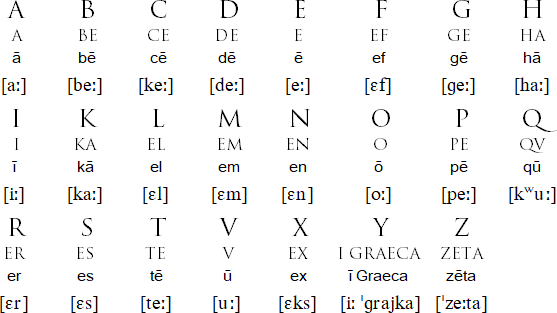The Classical Latin alphabet developed by the 3rd century BC. The version shown below was used for monumental inscriptions, and is known as Roman Square Capitals (capitalis quadrata) or Elegant Capitals (capitalis elegans).
During the classical revival, which started in the 18th century, the letter forms of the Classical Latin alphabet, were reintroduced to the languages of Europe by humanists.

Download charts for Latin alphabets (Excel)
Hear the pronunciation of Classical Latin
A fragment of an inscription about an order by the Emperor Vespasian to repair a clock which had been destroyed in the earthquake of 79 A.D. From the Correale Museum (Museo Correale di Terranova).

All human beings are born free and equal in dignity and rights. They
are endowed with reason and conscience and should act towards one another
in a spirit of brotherhood.
(Article 1 of the Universal Declaration of Human Rights)
Archaic Latin alphabet, Basque-style lettering, Carolingian Minuscule, Classical Latin alphabet, Fraktur, Gaelic script, Merovingian, Modern Latin alphabet, Roman Cursive, Rustic Capitals, Old English, Sütterlin, Visigothic Script
Page last modified: 23.04.21
[top]
You can support this site by Buying Me A Coffee, and if you like what you see on this page, you can use the buttons below to share it with people you know.

If you like this site and find it useful, you can support it by making a donation via PayPal or Patreon, or by contributing in other ways. Omniglot is how I make my living.
Note: all links on this site to Amazon.com, Amazon.co.uk
and Amazon.fr
are affiliate links. This means I earn a commission if you click on any of them and buy something. So by clicking on these links you can help to support this site.
[top]